From caramel-topped Dobos torte to vanilla-laced krémes, find below the classic Hungarian pastries and cakes that you'll find in Budapest's pastry shops.
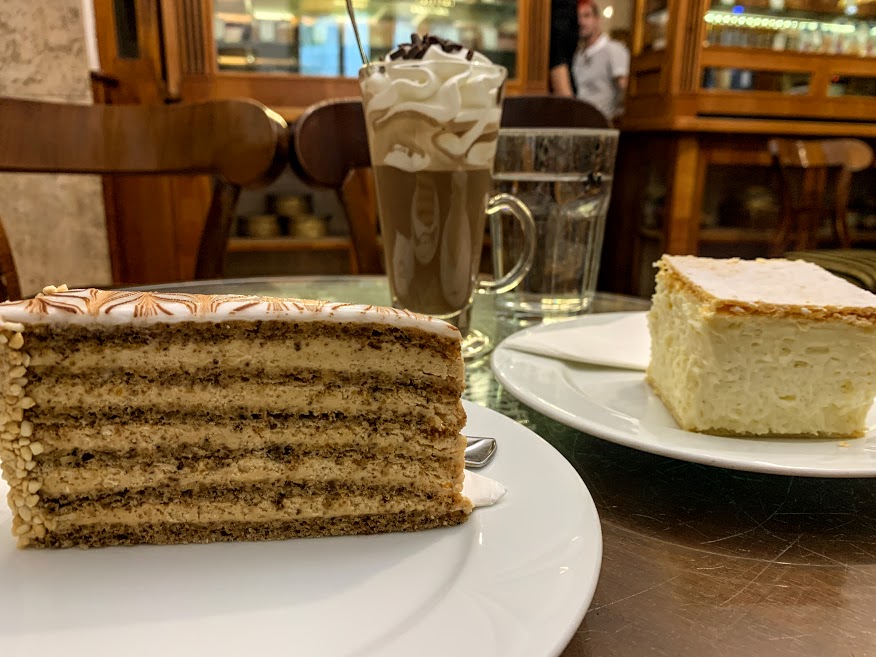
Hungarian pastries today reflect many influences: some hark back to medieval Hungary, others have Ottoman Turkish origins, still others show French cake-making techniques that seeped in through neighboring Austria. But starting in the mid-19th century, Hungary's pastry industry came into its own, unleashing a range of inventive creations.
The year 1884 was especially memorable: Two bakers, Emil Gerbeaud and Vilmos Ruszwurm, each took over a pastry shop that went on to transform Budapest's confectionery. The establishments still exist today: Café Gerbeaud and Ruszwurm. This was also when József C. Dobos invented the Dobos torte, which later became Hungary's most popular cake.
In Hungary, there's still a thriving pastry culture you're unlikely to experience elsewhere: pastry shops (cukrászda) are peppered across the city, with each neighborhood boasting at least a couple. Some people visit them to socialize — there's also coffee, tea, and savory biscuits — others just pop in to pick up cakes for the Sunday family meal. Here you can find my favorite cukrászdas in Budapest.
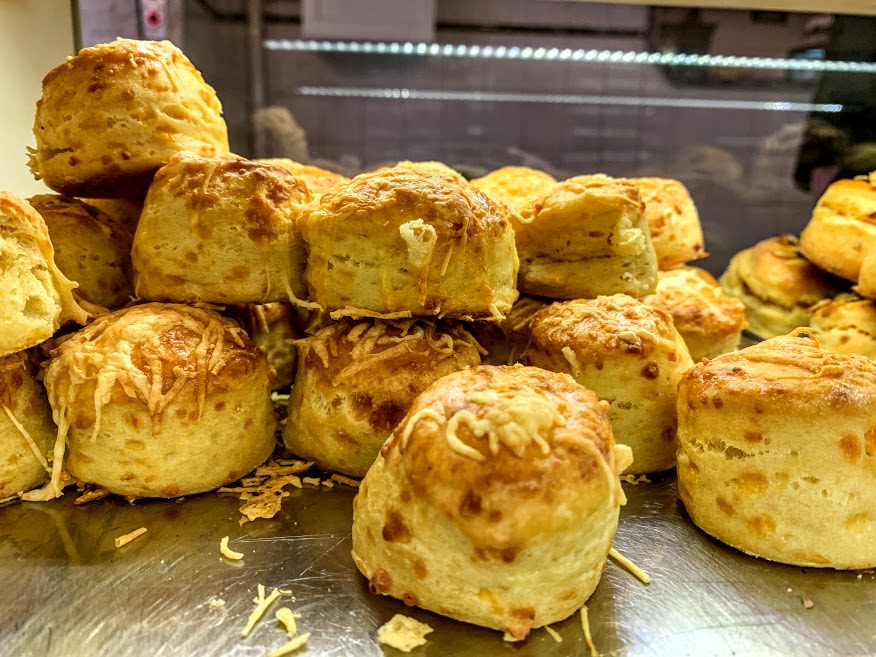
#1 - Pogácsa: These soft snacks are among the most traditional — dating back to medieval Hungary — and widespread across the country. They come in different sizes and varieties: you'll find pogácsa topped with melted cheese, dotted with pork cracklings (töpörtyűs), and filled with cottage cheese (túrós). Both bakeries and pastry shops sell pogácsa, but those often can’t hold a candle to a fresh homemade version.
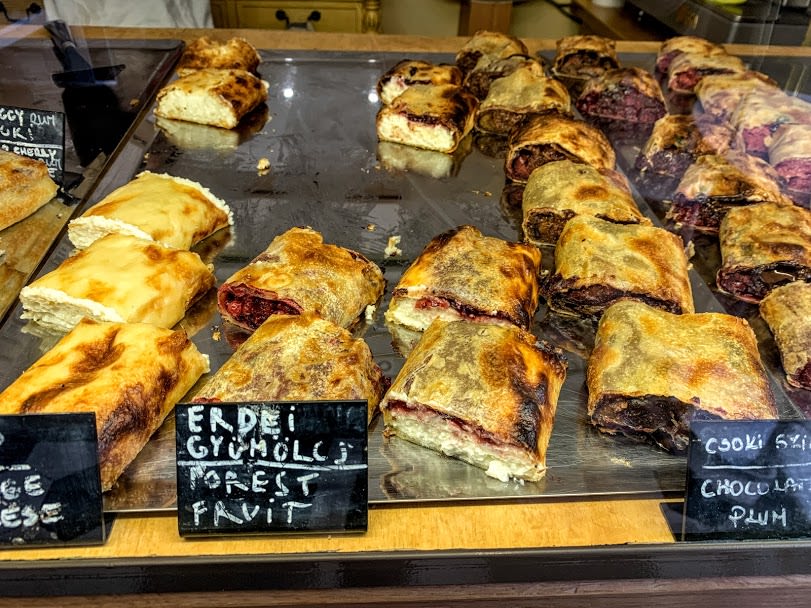
#2 - Strudel (rétes): Strudels evolved from the baklava, which Hungarians took from Ottoman Turkey when it ruled the country in the 16-17th centuries. Later, strudels spread across the whole Austro Hungarian Empire. What makes them unique in Hungary is the sheer variety of fillings, both sweet and savory. Have you had more than enough apple strudels in Vienna? No problem, try one with cottage cheese (túró), cabbage, or poppy seeds in Budapest.
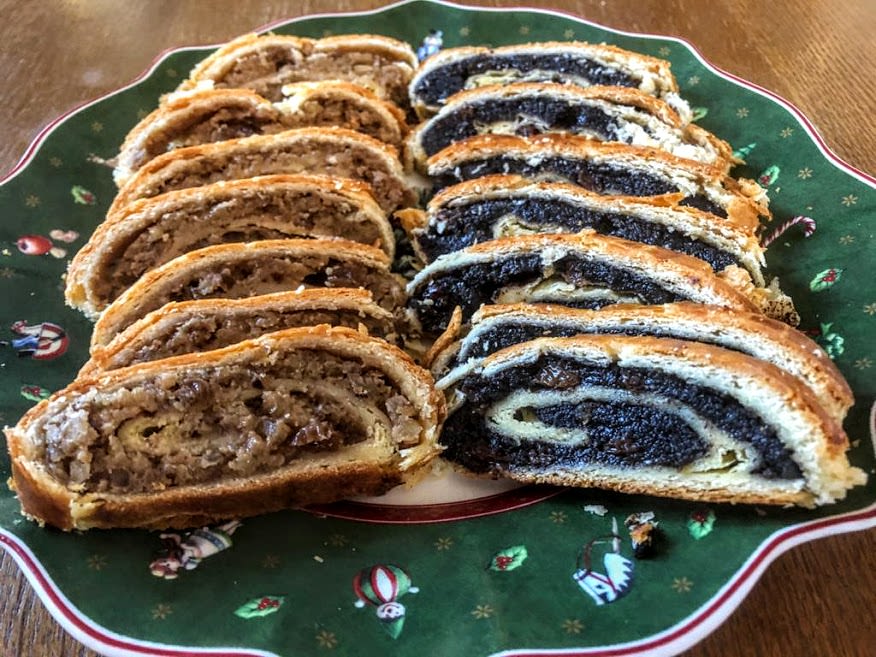
#3 - Bejgli: During Christmas, no Hungarian dining table is complete without these sweet rolls filled with finely ground poppy seeds and walnuts. People usually place them on a plate side by side because there's a folk belief that the poppy seeds bring prosperity and the walnuts keep trouble away. Bejgli is a staple across countries in Central Europe.

#4 - Pozsonyi kifli: This is a variation of the bejgli, above. During the Austro Hungarian Empire, bakers in Bratislava (Pozsony) were so skilled at making of these filled breads that people from as far as Budapest would order deliveries. To be able to distinguish between the two, the ones with poppy seeds come in a crescent shape, whereas those with a walnut filling resemble a letter C. Unlike the bejgli, the pozsonyi kifli is available throughout the year.

#5 - Chimney cake (kürtőskalács): Feel free to just tear into this aromatic Transylvanian chimney cake flaunting a caramelized crust and a chewy, soft interior. Kürtőskalács is prepared by wrapping the dough around a baking spit and then cooking it over charcoal (as seen above). Traditionally, people made it for family celebrations. Pastry shops don't sell them, but plenty of kürtőskalács vendors exist in Budapest's downtown.
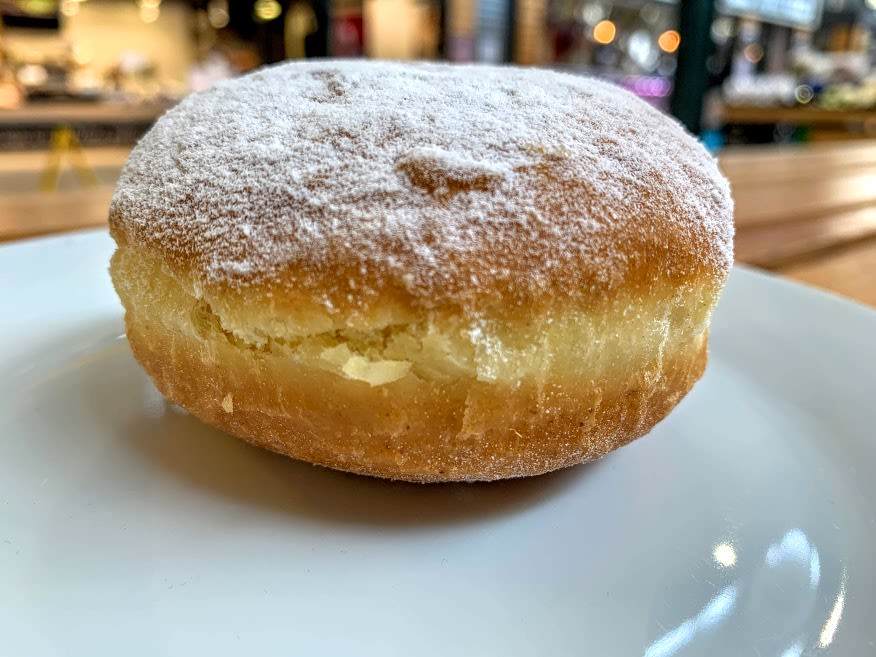
#6 - Doughnut (fánk): You might know it as krapfen, Berliner, bombolone, sufganiyah, or jelly doughnut — fánk is the Hungarian version of this centuries-old deep-fried pastry traditionally eaten in the days of Carnival. Besides fruit jam, fánks also come with a chocolate or a vanilla custard filling. Most bakeries and grocery stores in Hungary serve them year-round.
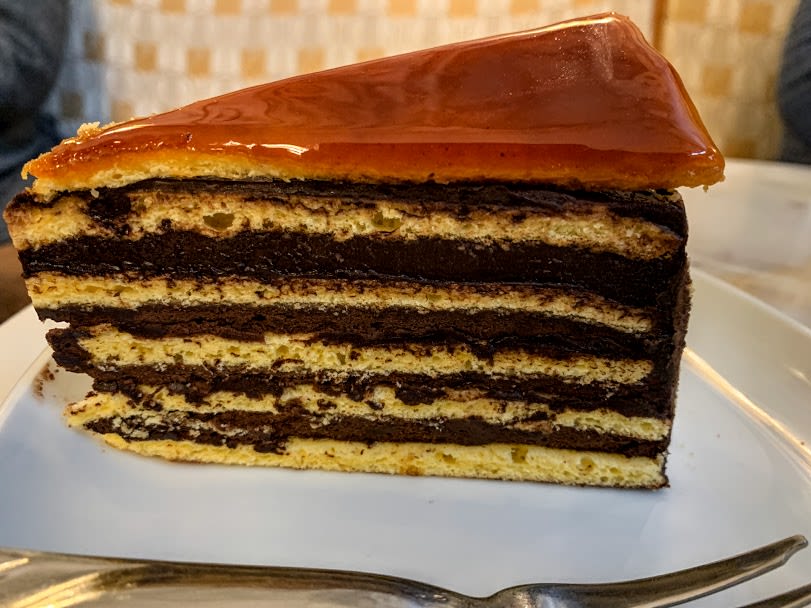
#7 - Dobos torte: It was confectioner József C. Dobos who created in 1884 this famous sponge cake layered with chocolate butter cream. The Dobos torte's signature feature is the shiny, brittle caramel topping. After pathetic attempts by competitors to replicate his concoction, Dobos made the recipe public and, still today, you'll find Dobos torte in most Budapest pastry shops.
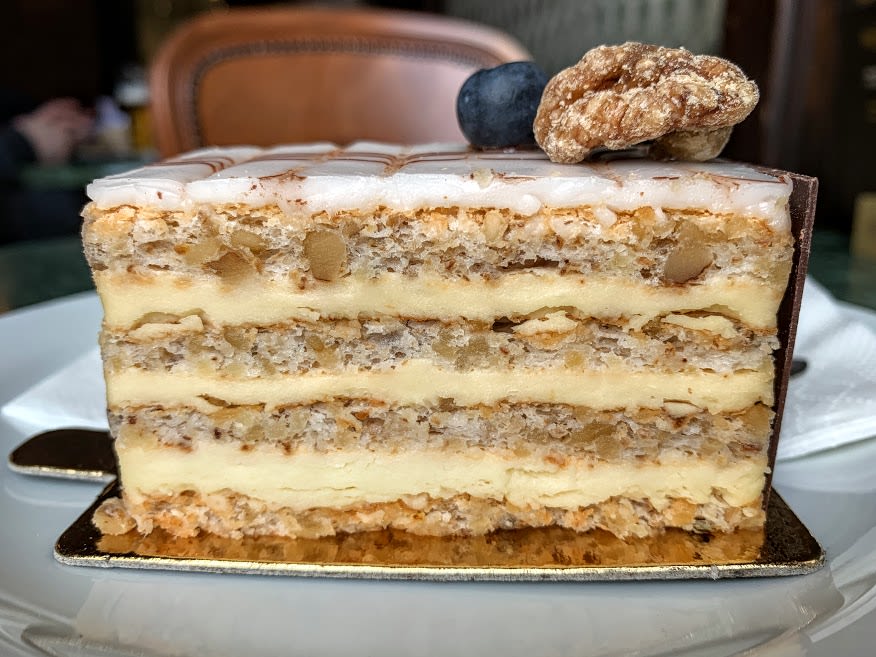
#8 - Esterházy torte: Named after a Hungarian royal dynasty, the Esterházy torte is one of the most well-known in and outside the country. It comprises alternating layers of ground walnuts (or almonds) and rum-laced buttercream with a white fondant coating. Interestingly, the cake contains no flour. At its best, the Esterházy torte is rich, but not cloying.
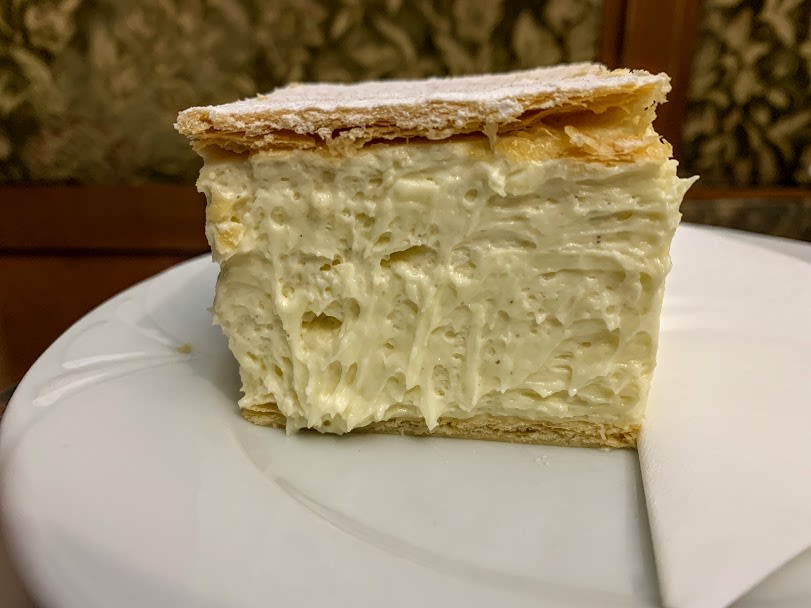
#9 - Krémes: Similar to a Napolean pastry, krémes is a cherished custard slice across Central Europe with each country flaunting a slightly different version. In Hungary, apart from regular krémes — vanilla custard enclosed by puff pastry — there's also "francia krémes," which comes with an extra layer of whipped cream and a caramel glaze on top.
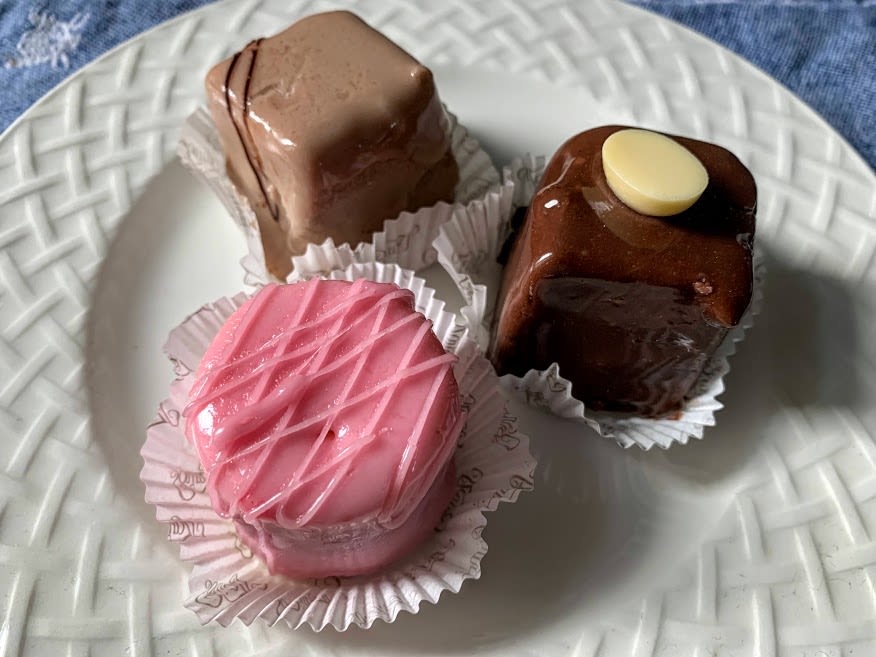
#10 - Minyon: Local confectioner Henrik Kugler introduced in Hungary the petit fours — those dainty, bite-sized, delicate French cakes — in the 19th century. Here, they grew in size and one of them, what came to be known as the minyon, became especially cherished. The color of the icing indicates the flavor of the buttercream filling: brown for coffee, dark for chocolate. But pink is most popular, sporting a rum-soaked sponge cake inside.
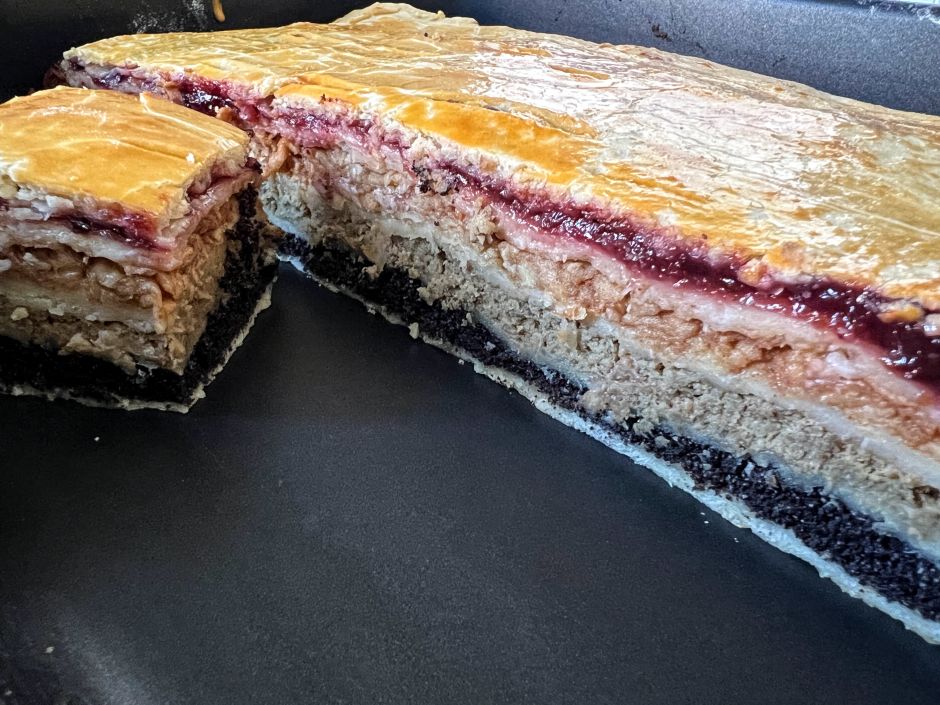
#11 - Flódni: This rich cake layered with plum jam, grated apples slickened with honey, sweetened ground walnuts, and ground poppy seeds spiked with lemon zest, originated in the 19th century among Hungary's Jewish community. Traditionally, people made it for the Jewish holiday of Purim, but today flódni is a cherished treat and widely available across Budapest pastry shops. Recipe.
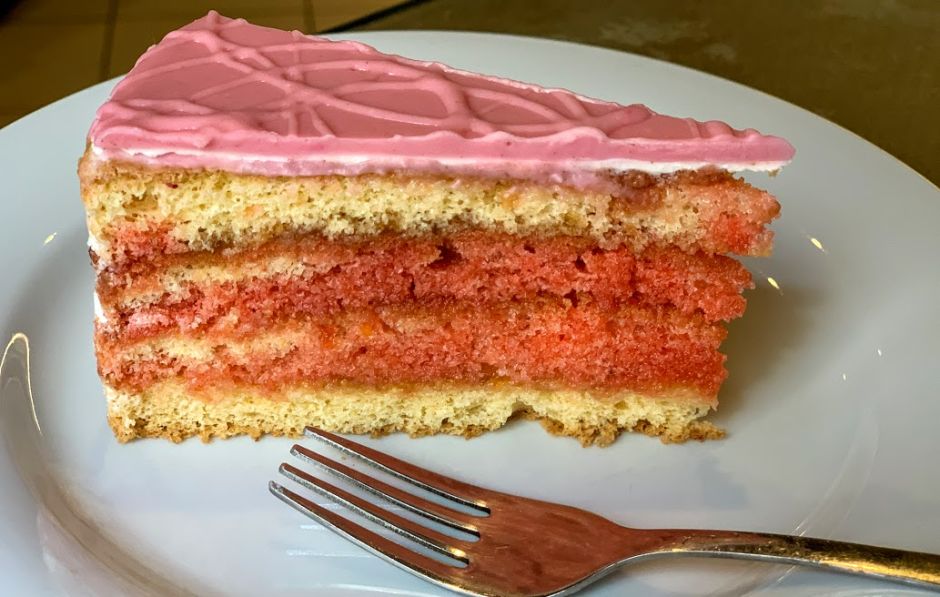
#12 - Punch torte: A classic of pastry shops across Budapest and Vienna, the signature feature of this rich cake is the striking pink icing enveloping the outside. A layer of apricot preserves and raisins are sandwiched between rows of rum-infused sponge cakes.
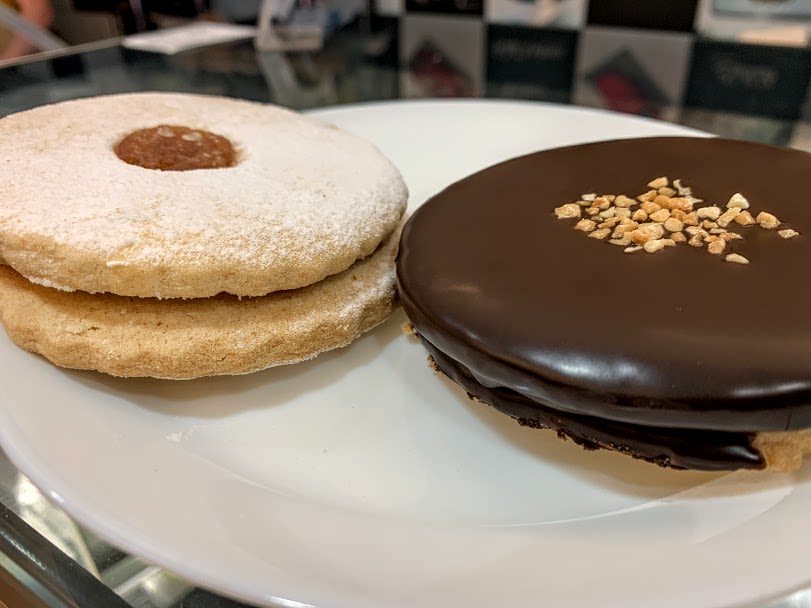
#13 - Linzer & Isler cookies: Both of these fruit jam-filled cookies made their way to Hungary from Austria with some twists and turns along the way. Typically, people enjoy them with their afternoon tea. The main difference between the two is the chocolate glaze that blankets the isler.
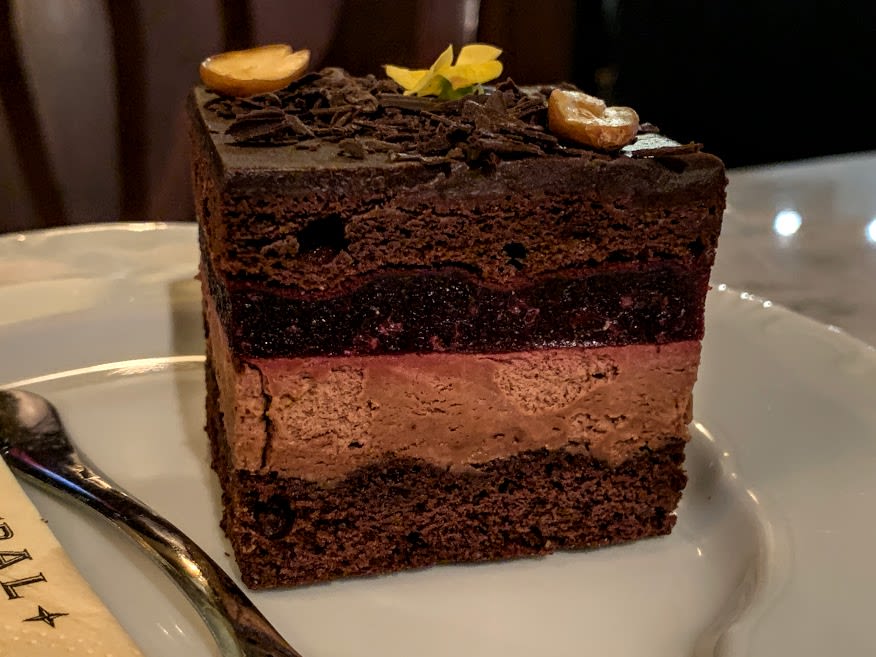
#14 - Rigó Jancsi: This cube-shaped sponge cake is named after the Hungarian gypsy violinist whose story famously scandalized 19th century Europe: Rigó seduced Princess Chimay, an American-Belgian socialite, who ran away with him, leaving behind a husband and two children. Their romance didn't last very long, unlike the chocolate cream-filled cake Rigó inspired, which became a classic, though fewer and fewer Budapest pastry shops serve it these days.
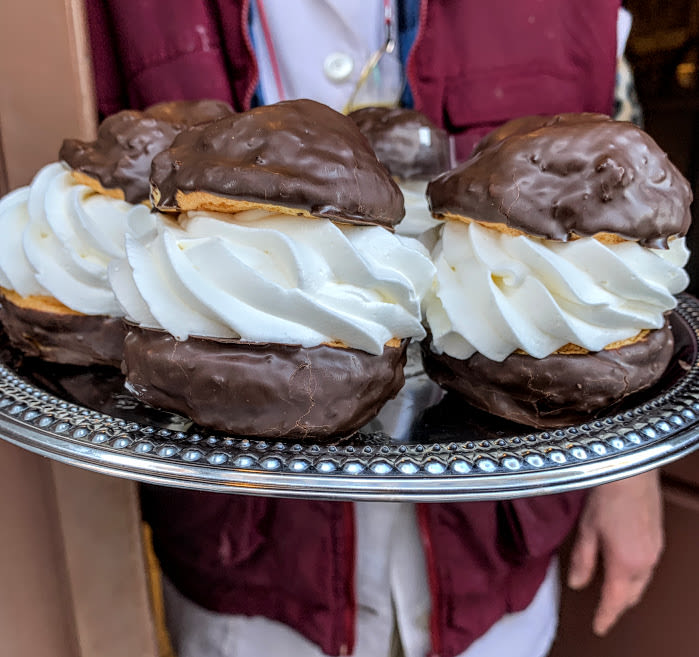
#15 - Indiáner: These puffy black-and-white cakes were all the rage a hundred years ago in pastry shops across Budapest and Vienna. Blanketed in chocolate and split by a layer of whipped cream, Indiáners are delicious but a hassle to do. Auguszt pastry shop is among the few places in Budapest that still make them.
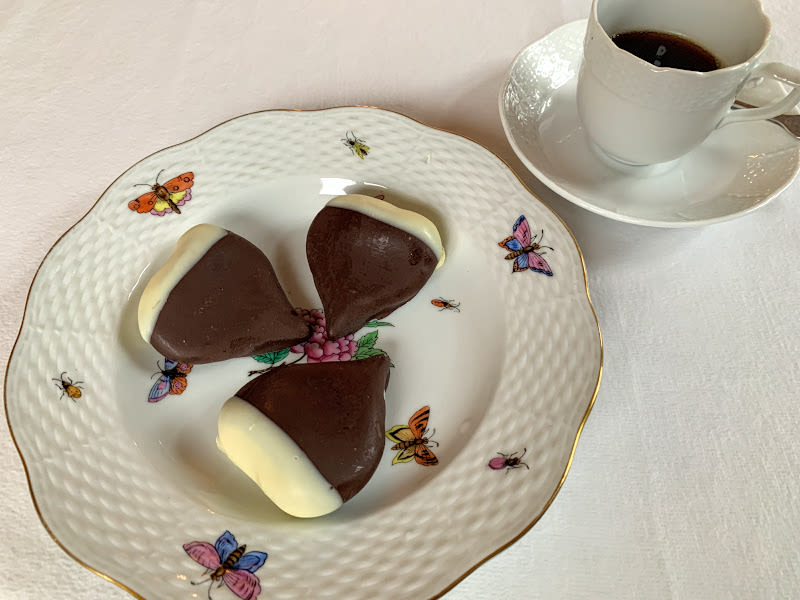
#16 - Gesztenyszív: How about a post-meal dessert that won't knock you out for the rest of the day? These chestnut paste treats coated in crackly chocolate are light and winsome. Cut in the shape of a heart, they're sold in almost all Budapest pastry shops.

#17 - Tepertős-szilvás papucs: Prune jam and pork cracklings? Used in the same pastry? What may sound like a bizarre combination turns out to produce a delicious sweet-savory snack (these two ingredients are widespread and adored in Hungary). People usually make tepertős-szilvás papucs at home but a few pastry shops will also have it.
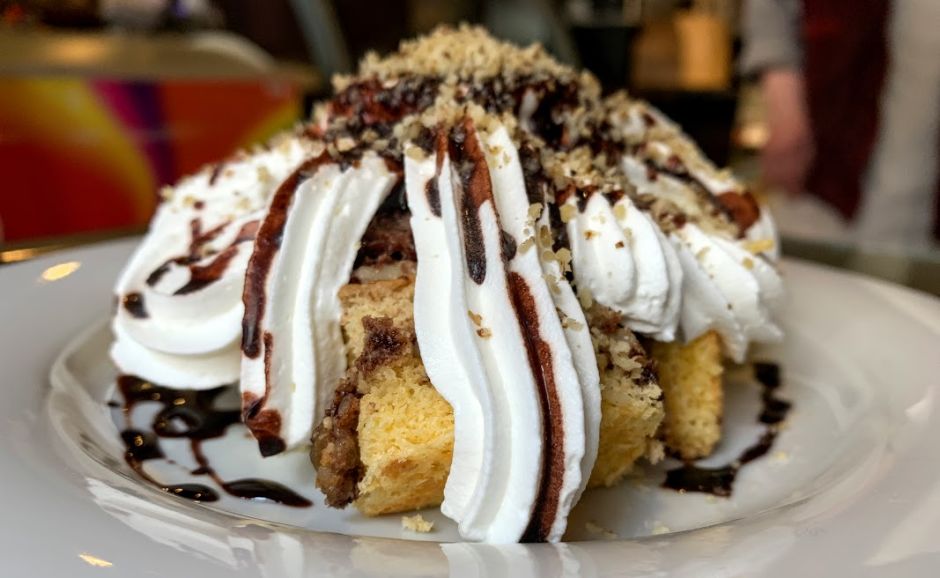
#18 - Somlói galuska: Despite being a relatively recent invention, dating back to the 1950s, the somlói galuska is a beloved dessert dish across Hungary. It consists of a rum-infused sponge cake soaked in vanilla custard, chocolate cream, and whipped cream, with a sprinkling of walnuts and raisins. Apart from pastry shops, restaurants also serve it.
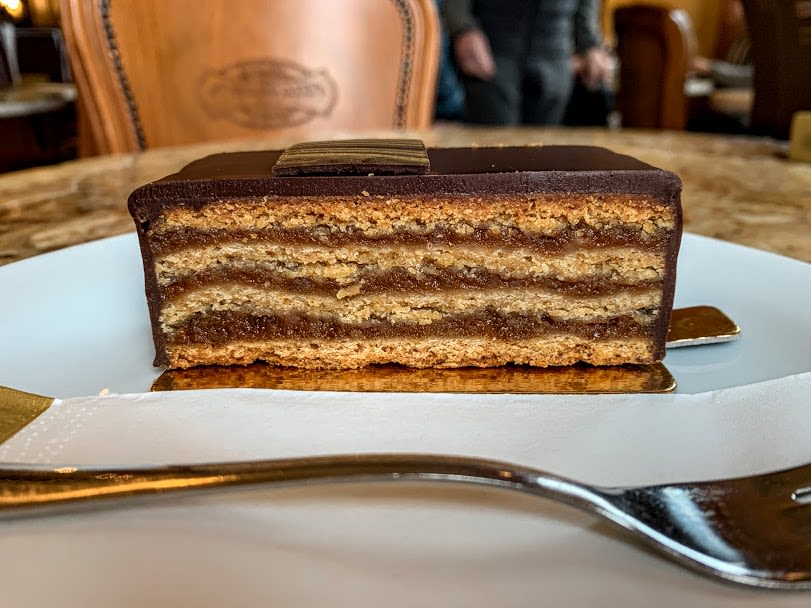
#19 - Gerbeaud slice: Created at the historic Café Gerbeaud, this bite-sized cake is a staple of all pastry shops in Hungary. Under a chocolate glaze lie layers of a sweet dough alternating with a filling of ground walnuts and apricot jam.
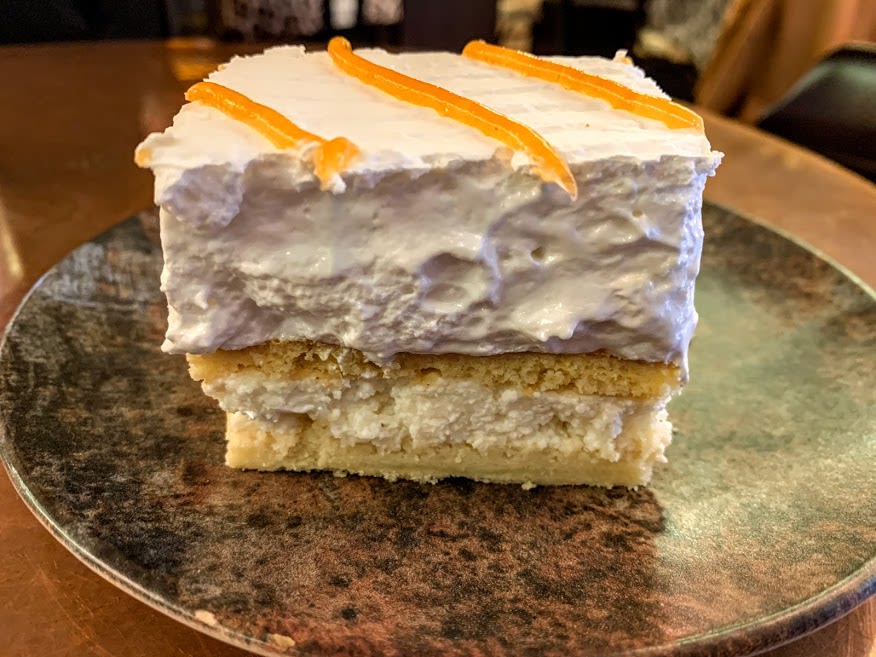
#20 - Rákóczi túrós: Even most Hungarians mistakenly believe that this meringue and apricot jam-topped túró cake is named after the country's famous prince and revolutionary leader, Ferenc II Rákóczi, but the truth is more banal: the moniker is a hat-tip to baker János Rákóczi, who invented the cake in the 1930s.
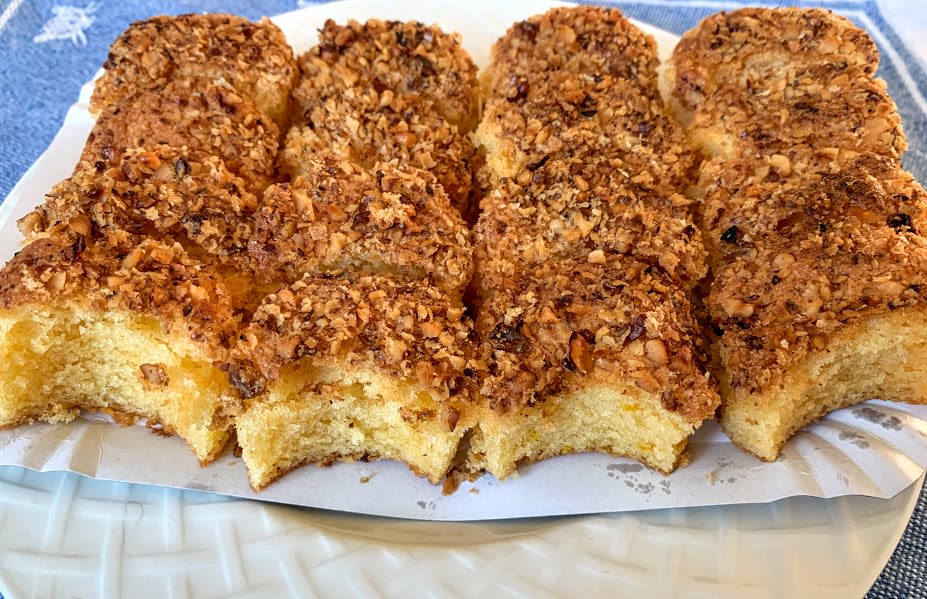
#21 - Kossuth kifli: Typically made at home, this half-moon shaped pastry was supposedly a favorite of Lajos Kossuth, a national hero and leader of the 1848 Hungarian revolution against Habsburg Austria. It's actually a simple and delicious sponge cake, sprinkled with bits of browned walnuts or almonds. Some people prepare it annually on March 15th, in memory of Kossuth and the first day of the revolution.

#22 - Marzipan: As Italy, Germany, and Spain, Hungary also enjoys a thriving marzipan culture with Budapest pastry shops serving colorful figures of all shapes and sizes year-round (marzipan is made from a mixture of almond paste and sugar). There's even a dedicated Marzipan Museum in the town of Szentendre.